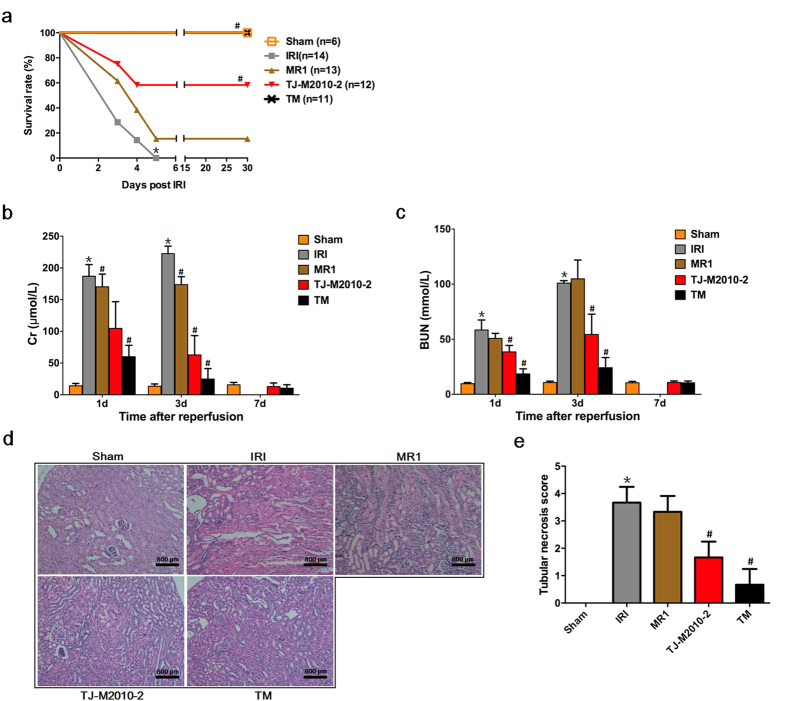Figure 2. TJ-M2010-2 alone or in combination with MR1 prolongs survival, protects the renal function, attenuates pathologic damage of mice subjected to renal ischemia reperfusion injury (IRI).
Mice were exposed to IRI for 80 min with uninephrectomy. (a) After the left renal pedicle was clamped for 80 min, mouse survival status was monitored for 30 days. The survival rate was 100% in Sham; 0% in IRI; 15.4% in MR1; 58.3% in TJ-M2010-2; 100% in TM (*p < 0.01 versus Sham; #p < 0.01 versus IRI). (b,c) Six mice were sacrificed for each group. Blood samples were collected on day 1, day 3 and day 7 after reperfusion to measure serum creatinine (Cr) and blood urea nitrogen (BUN) levels (*p < 0.01 versus Sham; #p < 0.01 versus IRI). Results are expressed as mean ± s.d. (d) Renal tissues were collected one day after IRI and stained with Hematoxylin & Eosin (three mice were sacrificed for each group). Original magnification × 200 over five fields. Histological sections of renal tissues are shown. Bar = 800 μm in all panels. (e) Histogram of tubular necrosis scores (*p < 0.01 versus Sham; #p < 0.01 versus IRI). Results are expressed as mean ± s.d.

